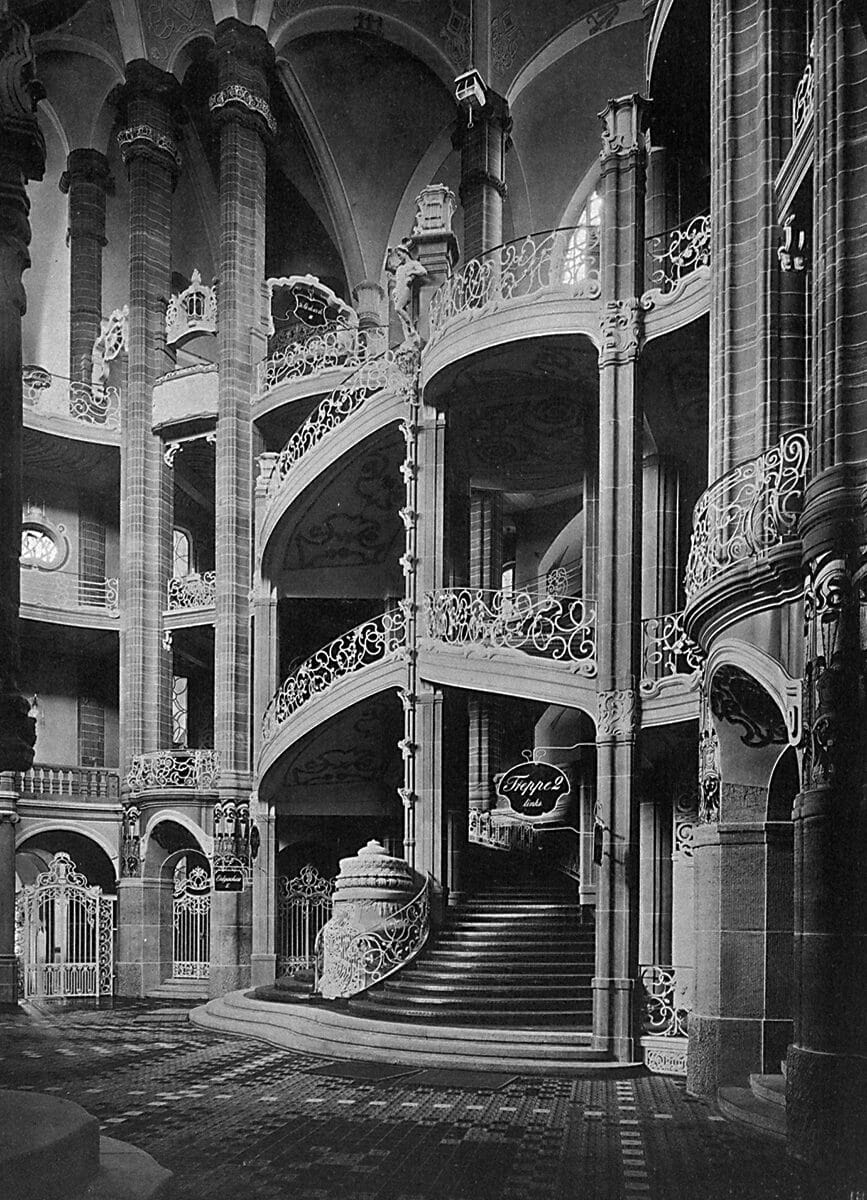The introduction of public, oral proceedings into German jurisprudence following the proclamation of the Reichsjustizgesetze in 1879 brought the public before court with resounding urgency. Planning and construction for courthouses grew exponentially in the following years in order to provide an actual, physical space for this public alongside the new legal framework. From the mid-1890s onward, this practice became increasingly elaborate, with expressive Gestalt consolidated in complexes’ stairways.

In the wake of these changes, a dedicated division for courthouse construction was established within the Prussian Ministry of Public Works under the leadership of Paul Thoemer. This division was responsible for the two case studies at the heart of this art historical project: the Halle Civil Court (1901–1905) and the Berlin Mitte District Court (1900–1904). These spaces, as novel sites of interaction between the newly conceived, liberal, and economically rational citizen and the administrative machinery of the state, stand out from the surrounding utilitarian architecture of administration. The project asks how these elaborate spaces could arise at the intersection of legal and architectural standardization and rationalization. Linking these spaces to turn-of-the-century German art history’s preoccupation with rhythm as an element of sensory aesthetics, the project questions their role in forging a novel legal subject through the kinetic experience of space. In this reading, the stairwells become a medium for re-presentation, making the legal order imminently perceptible to the viewer–subject. Beyond this evidentiary character, this reading allows other operations of hygiene, as well as social and institutional differentiation, to come to light.
In addition to exploring the history of ideas of the epistemic potential of the sensory body in German art history, Gestalt psychology, phenomenology, and aesthetics around 1900, the project seeks to approach its subject matter through the lenses of legal and media history, as well as recent approaches in bureaucracy studies.